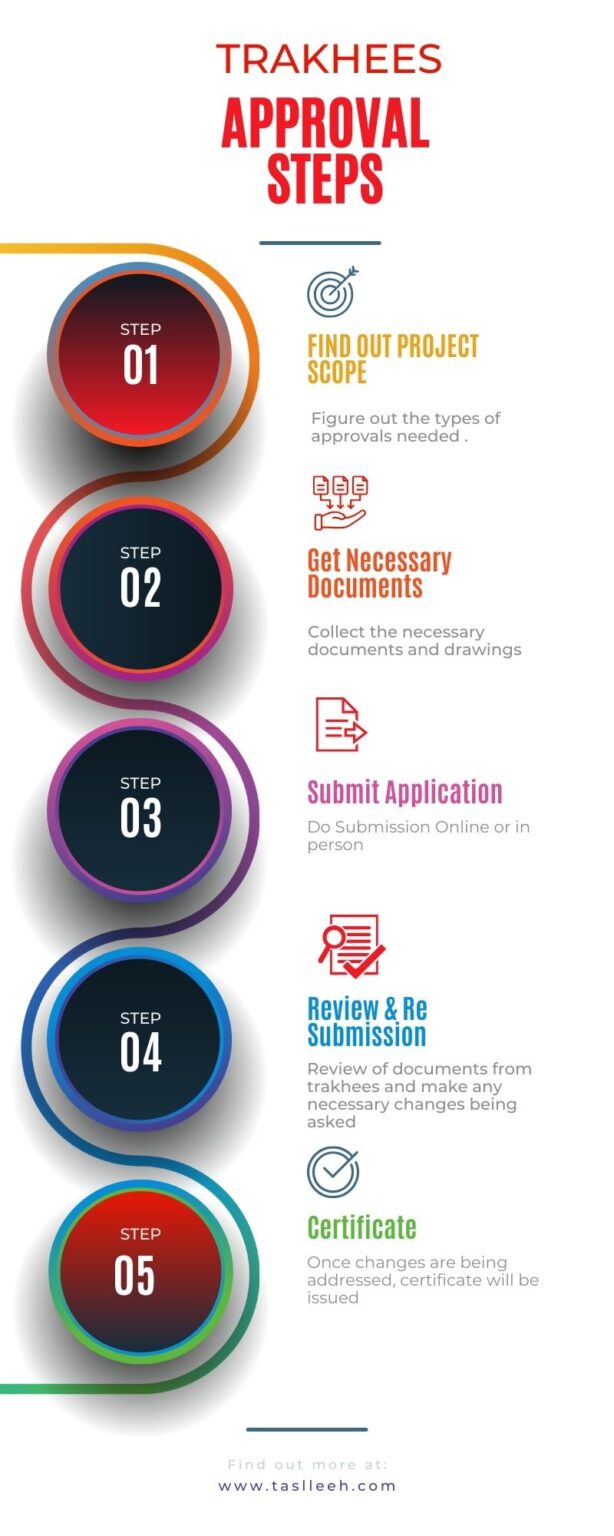The Trakhees approval process encompasses multiple stages, each requiring specific actions and documentation. We have broken it down into five key steps. Let’s explore each step in detail.
Step 1: Figure out the Overall project scope
At the start of the process, identify the scope of your project and understand the specific business requirements. This includes figuring the type of approvals, such as building permits, trade licenses, or design approvals.
Additionally, become familiar with the regulations and guidelines set forth by Trakhees. These regulations are in areas of construction, fire safety, environmental compliance, and more. This will enable you to prepare the necessary documents and ensure compliance from the outset.
Step 2: Preparing the necessary documents and drawings
Once you got a clear grip of the project scope and requirements, it’s time to collect the necessary documents and drawings for your Trakhees approval application. The specific documents may vary depending on the nature of your project, but some common requirements include:
–Trade license copy
–Passport and visa copy of the business owner
– Site plan or layout drawings
– Architectural & structural drawings
– MEP (mechanical, electrical, and plumbing) drawings
– NOC (no objection certificate) from relevant authorities
Ensure that all the required documents in the prescribed format and ensure their accuracy and completeness. Any missing or incorrect information can lead to delays in the approval process.
Step 3: Application Submission for Trakhees Approval
Submission can be done through Trakhees’ online portal or by visiting their office in person. Ensure that you follow the application guidelines provided by Trakhees and submit all the required documents.
Keep track of the application reference number that you receive during your application. This will help you to track the progress
Step 4: Review and resubmission
Once submission is successful, Trakhees will review and evaluate the documents and drawings to ensure compliance with the relevant regulations and guidelines. This process may involve site visits, inspections, and consultations with relevant authorities or experts.
During this stage, it’s crucial to be responsive to any queries or requests for additional information from Trakhees. Promptly providing the required information will help expedite the evaluation process and ensure a smooth approval.
After evaluation of your application, Trakhees may request modifications to ensure compliance with their regulations and requirements. It’s essential to address any feedback or requests within the specified timeframe.
It’s always better to consult relevant experts, such as trakhees approved contractors, to implement the necessary changes or modifications. This increases the chances of obtaining Trakhees approval without further delays.
Step 5: Obtaining the Trakhees Approval certificate
Once you address the feedback or modifications requested by Trakhees, your application will undergo a final review. Once the review is completed, you will receive the Trakhees approval certificate, indicating that your project has been given a green signal from trakhees.

